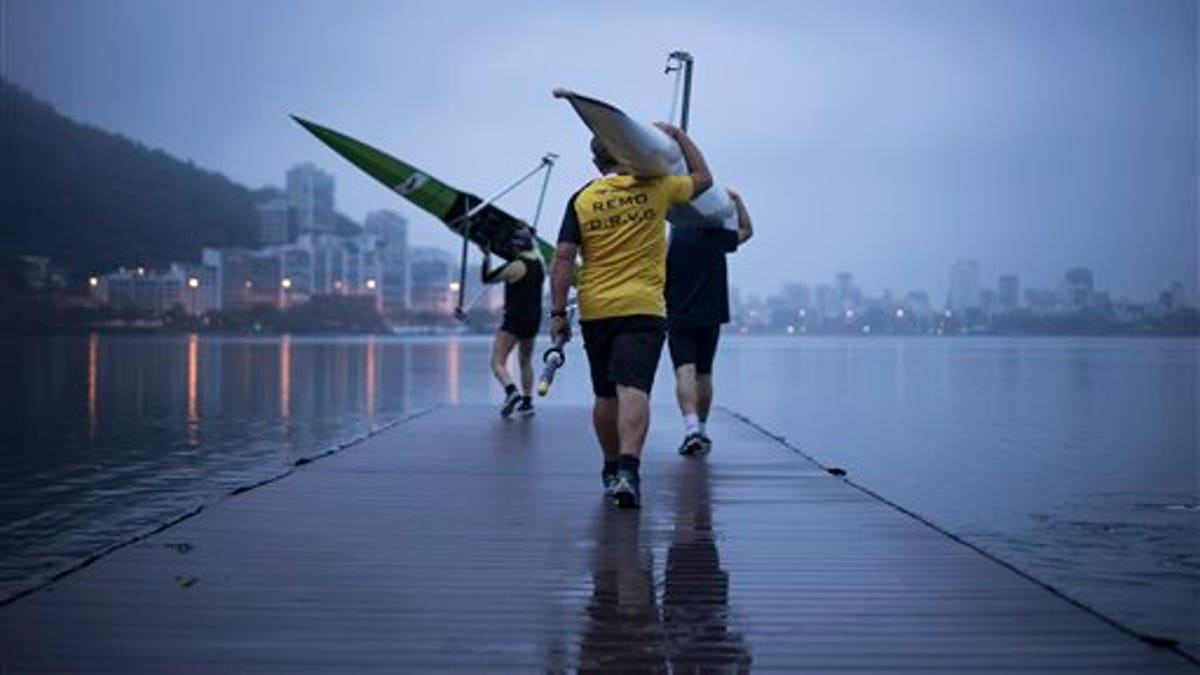
Rowers carry boats at the Rodrigo de Freitas Lagoon in Rio de Janeiro, Brazil, on Nov. 4, 2015. Athletes in Rio test events have tried many tricks and treatments to avoid falling ill from its contaminated waters. (AP Photo/Felipe Dana)
RIO DE JANEIRO – Olympic sailor Erik Heil floated a novel idea to protect himself from the sewage-infested waters he and other athletes will compete in during next year's games: He'd wear plastic overalls and peel them off when he was safely past the contaminated waters nearest shore.
Heil, 26, was treated at a Berlin hospital for MRSA, a flesh-eating bacteria, shortly after sailing in an Olympic test event in Rio in August. But his strategy to avoid a repeat infection won't limit his risk.
A new round of testing by The Associated Press shows the city's Olympic waterways are as rife with pathogens far offshore as they are nearer land, where raw sewage flows into them from fetid rivers and storm drains. That means there is no dilution factor in the bay or lagoon where events will take place and no less risk to the health of athletes like sailors competing farther from the shore.
"Those virus levels are widespread. It's not just along the shoreline but it's elsewhere in the water, therefore it's going to increase the exposure of the people who come into contact with those waters," said Kristina Mena, an expert in waterborne viruses and an associate professor of public health at the University of Texas Health Science Center at Houston. "We're talking about an extreme environment, where the pollution is so high that exposure is imminent and the chance of infection very likely."
In July, the AP reported that its first round of tests showed disease-causing viruses directly linked to human sewage at levels up to 1.7 million times what would be considered highly alarming in the U.S. or Europe. Experts said athletes were competing in the viral equivalent of raw sewage and exposure to dangerous health risks almost certain.
